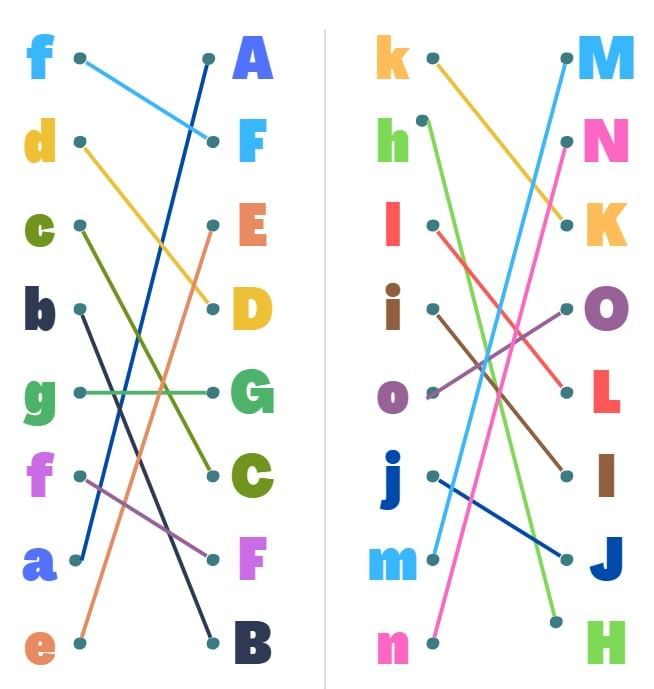LKG Exam > LKG Notes > English for LKG > Worksheet Solutions: Small Letter - 2
Worksheet Solutions: Small Letter - 2 | English for LKG PDF Download
Draw a line to match the uppercase letter on the left to its lowercase letter on the right.

The document Worksheet Solutions: Small Letter - 2 | English for LKG is a part of the LKG Course English for LKG.
All you need of LKG at this link: LKG
|
67 videos|173 docs|1 tests
|
FAQs on Worksheet Solutions: Small Letter - 2 - English for LKG
| 1. What are small letters and why are they important in writing? |  |
Ans.Small letters, also known as lowercase letters, are the smaller form of the alphabetic characters used in writing. They are important because they help in creating a variety of text styles and improve readability. In many languages, the use of small letters is essential for proper grammar and sentence structure, making written communication clearer and more effective.
| 2. How can I practice recognizing small letters effectively? |  |
Ans.Practicing recognition of small letters can be done through various methods such as worksheets, flashcards, and interactive games. Engaging in exercises that involve tracing, matching, and identifying small letters in different contexts can greatly enhance one’s ability to recognize them. Consistent practice helps reinforce learning and build confidence in using small letters.
| 3. What are some common mistakes people make when distinguishing between big and small letters? |  |
Ans.Common mistakes include confusing the shapes of similar letters, such as 'b' and 'd', or 'p' and 'q'. Additionally, some may overlook the importance of capitalization rules, like starting a sentence with a capital letter. Understanding the distinct characteristics of each letter and practicing their usage can help minimize these errors.
| 4. Are there specific age groups that should focus on learning small letters? |  |
Ans.Learning small letters is typically emphasized in early childhood education, particularly for preschool and kindergarten-aged children. However, learners of any age can benefit from understanding and practicing small letters, especially those who are new to a language or are improving their literacy skills.
| 5. How do small letters differ from big letters in terms of usage? |  |
Ans.Small letters are primarily used in the middle and at the end of sentences, while big letters, or uppercase letters, are used to start sentences and denote proper nouns. Understanding when to use each type of letter is crucial for proper punctuation and grammatical structure in writing.
Related Searches
















